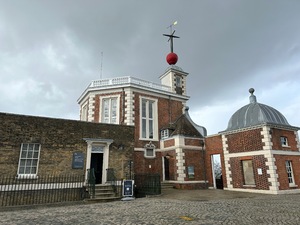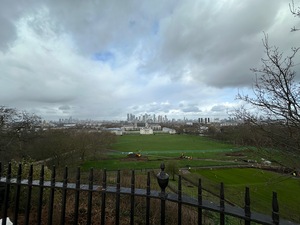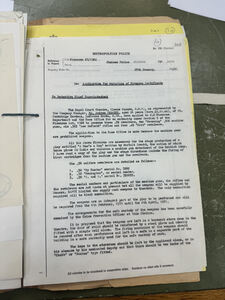
Browse Items (226 total)
Sort by:
-
Some account of life in Holloway Prison for Women booklet cover
The cover of a small booklet which contains records of life in Holloway Prison for Women. It is chiefly authored by Kathleen Lonsdale. Lonsdale was a chemist and prison reform activist. -
Sudeley Castle Exterior
The exterior of Sudeley Castle, where Katherine Parr lived and died. -
Flamsteed House, London 2024
The Flamsteed House, where the Royal Astronomers stayed with their families. The first astronomer and family to live there was the John Flamsteed with his family. This house was built in 1676, however the picture was taken March 15th, 2024. -
View of Queen's House and River Thames, March 2024
This is the physical imagery captured by the Camera Obscura at the Flamsteed House in March 2024 -
Denial of Firearms Certificate for Use on Stage
Detective Inspector P. Griggs makes a report denying a firearms certificate application on the notions of a prop not being made first, and previous unsafe behaviors with live firearms on the Theatre's property. -
Astronaut Edwin Aldrin walks on lunar surface near leg of Lunar Module
Edwin Aldrin walks on the surface of the moon during an Extra Vehicular Activity on Apollo 11. Photograph taken by Neil Armstrong -
London Fire Monument.
To memorialize the Great London Fire of 1666, Sir Christopher Wren helped Robert Hooke build this monument near the London Bridge. -
St. Peter's Cornhill.
A picture of St. Peter's Cornhill, a church that Sir Christopher Wren built after the London fire in 1666. -
St. Michael Cornhill.
St. Michael Cornhill is a church that stands on one of the oldest Christian sites in Britian, dating back to Roman occupation. It was rebuilt by Sir Christopher Wren in 1672 after the London Fire in 1666. The tower was built by Nicholas Hawksmoor in 1722. It was later restored by Sir George Gilbert Scott in 1860. -
St. Mary Woolnoth.
St. Mary Woolnoth is one of the churches rebuilt after the London Fire. It had partly survived the fire but after considerable repairs in 1670, it was determined that it needed to be rebuilt in the 18th century. While this one is traditionally credited to Hawksmoor, it was rebuilt by the Commision that rebuilt about 50 churches in London, which Sir Christopher Wren is usually credited.








